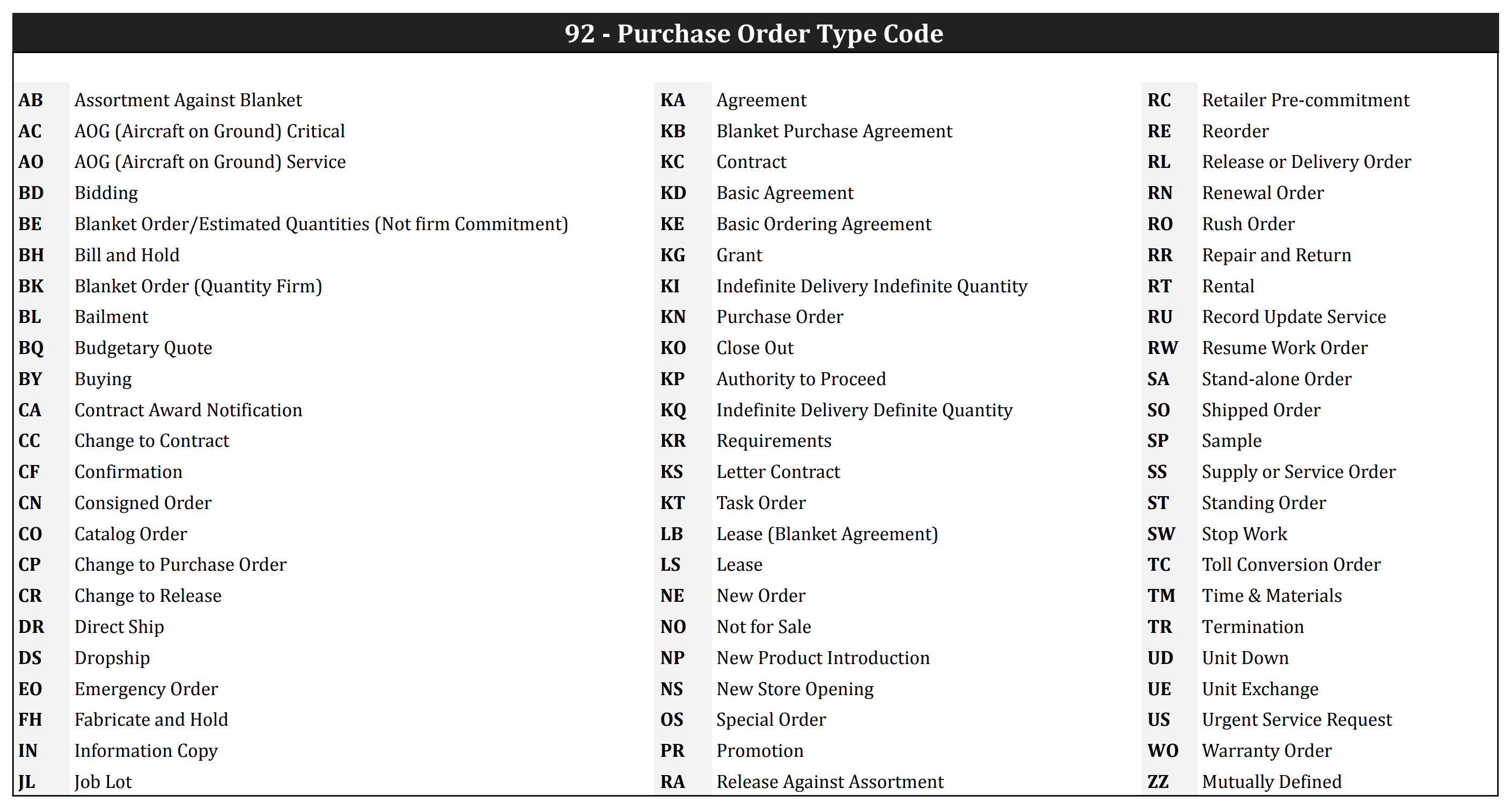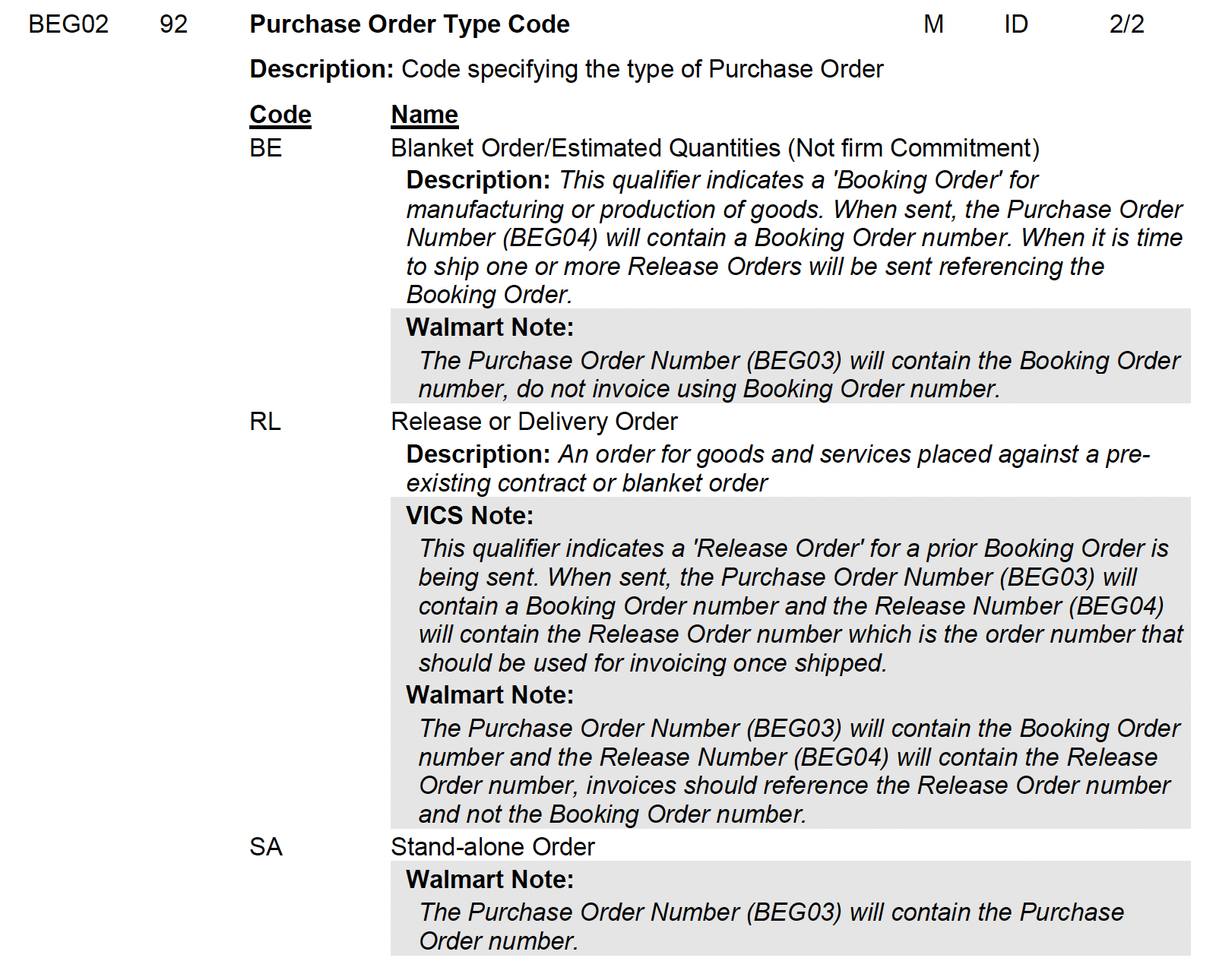MFT Gateway is a hosted Software as a Service (SaaS) solution that enables file exchange over the AS2 or SFTP protocol, without the need to install or maintain.
- Blog
- EDI X12 Data Types
EDI
EDI X12 Data Types
EDI X12 standard has 7 main data types used for data elements, which are ID, B, AN, Nn, Rn, DT and TM. This article compare and contrast these data types in detail.

Udith Gunaratna
Modified: 23 Nov 2025

Table of Contents
Electronic Data Interchange (EDI) is a standard format used to electronically interchange business information such as Purchase Orders, Shipping Noticed and Invoices between companies. Currently, there are 2 main EDI standards as X12 (mainly used in the USA) and EDIFACT (mainly used in Europe). The data on these EDI documents are represented via sections called “Loops” and “Segments”. A “loop” consists of segments and/or sub loops, where a segment consists of subsections called “Data Elements”.
The EDI specification for a particular EDI transaction type (e.g. 850 - Purchase Orders) specifies 3 main attributes for each such data element, which are Minimum Length, Maximum Length and Data Type. In this article, we are going to discuss the main Data Types used in EDI X12 standard.
The following image shows the definition of
PO1segment on Walmart 850 documents, with data elements having the above mentioned attributes specified. (Source)

What is X12 EDI?
X12 is the most widely used EDI standard within the USA, which is formally referred to as ASC X12 EDI. This X12 standard was introduced in the 1970s, and evolved for more than four decades and the main purpose of that is to establish a well-defined set of EDI standards and corresponding documents to be used within organizations for a multitude of purposes. Having such a central standard eliminates the communication problems arising from different organizations having different incompatible software for EDIs. X12 standard is more prominently used in industries such as retail, shipping/logistics and healthcare.
EDI X12 Data Types
Following are the main data types used in the EDI X12 standard.
ID- Pre-defined IdentifierB- BinaryAN- AlphanumericN/Nn- Numeric data with implied decimalR/Rn- Decimal numeric dataDT- DateTM- Time
ID
The data elements with type as ID must use a code value from a pre-defined list of IDs specified by the relevant EDI standard.
For example, the following is the list of ID values that can be used with the BEG02 (ID: 92) data element of Purchase
Order (850) transactions. Any other value except for these values can not be used for this particular data element.

Usually these default ID lists contain many pre-defined IDs covering all the use cases of that data element across different EDI domains/industries. Therefore, most EDI vendors prefer to use a subset of values from that list, which are adequate to cover their use cases.
For example, the following is the list of ID values accepted by Walmart for the same BEG02 (ID: 92) data element discussed
above. You can see that Walmart only accepts 3 (BE, RL and SA) out of the 66 ID codes available for this element.
In this kind of scenario, using an ID code not belong to these 3 can make the EDI document invalid, even though that ID
code is valid according to the generic EDI specification.

Aayu EDI Generator allows you to pre-configure which ID codes are accepted by your trading partner for a specific element, and then it will validate any generated EDI for that partner to ensure that no unaccepted values are being used, even though that value is valid according to the base X12 specifications.
B
The data elements with type as B are used to specify binary values. The value of such an element will be a sequence
of octets in the range of binary value 00000000 to 11111111. Although an element of this type does not have a defined
length in its attributes, usually the preceding element value specifies the expected length.
Binary (
B) data type is only used within theBINsegments of EDI X12 transactions
AN
The data elements with type as AN should contain alphanumeric values. Although the word “alphanumeric” typically means alphabetical characters and numbers, in EDI X12 specification this type is considered as a sequence of printable characters.
An AN type value can consist of the characters from the following Basic and Extended character lists. The significant
characters should be left justified. Although an AN value should not have trailing spaces, any leading spaces are
considered as significant and included.
Basic characters
| Uppercase letters | A B C D E F G H I J K L M N O P Q R S T U V W X Y Z |
| Numeric digits | 0 1 2 3 4 5 6 7 8 9 |
| Special characters | ! " & ' ( ) * + , - . / : ; ? = |
| The space character |
Extended characters
| Lowercase letters | a b c d e f g h i j k l m n o p q r s t u v w x y z |
| Other special chars | % ~ @ [ ] _ { } \ | < > |
| National characters | # $ |
Even though an AN (alphanumeric) element can technically contain any combination of the permitted characters, some
trading partners place additional expectations on the values used in specific elements. For example, Walmart requires
the BIG02 element in 810 invoices (the invoice number) to be a numeric value with up to 15 digits. In such a
scenario, not adhering to that expected formatting will make the EDI document invalid.
Aayu EDI Generator allows you to pre-configure Regular Expressions for a specific element, and then it will validate any generated EDI for that partner to ensure that the provided value adhere to the configured regular expression.
N / Nn
The data elements with type as N or Nn (N0, N1, N2…) do not contain an explicit decimal on their value.
But the value of n indicates where the implied decimal is from the right end of the value of this element.
Type
Nand typeN0are equivalent, i.e.nis considered as0if data type is mentioned as justN.
For example, if the type is N2 (i.e. n = 2) and the value of the element is 1234567, it means that the implied
decimal is before the last 2 (n) digits of the value (i.e. between 5 and 6). So the actual value represented by
this element will be 12345.67. Please see some more sample cases below.
| Type | Actual Value | EDI Element Value | Explanation |
|---|---|---|---|
N0 / N |
12345.00 |
12345 |
Whole number (12345) + no decimals |
N1 |
12345.00 |
123450 |
Whole number (12345) + 1 decimal (0) |
N2 |
12345.00 |
1234500 |
Whole number (12345) + 2 decimals (00) |
N3 |
12345.789 |
12345789 |
Whole number (12345) + 3 decimals (789) |
Usually an Nn value should not have leading zeros, unless they are required to satisfy the minimum length
condition of the element. A negative value should have the minus (-) sign, and it is not counted when determining the
length of the value.
R / Rn
The data elements with type as R or Rn (R0, R1, R2…) contain the decimal in the value, if the actual
value contain a fraction. But the decimal part is optional if the value is an integer. Usually a Rn value
should not have leading zeros, unless they are required to satisfy the minimum length condition of the element.
Trailing zeros of the decimal part is also should be omitted, unless they are required to indicate the precision. A
negative value should have the minus (-) sign, and it is not counted when determining the length of the value.
Unlike in
Ntype, typeRand typeR0are not equivalent.R0indicates that the value should not have a decimal part, while having type as justRallows the precision of the original values as it is, except for trailing zeros on the decimal part.
| Type | Actual Value | EDI Element Value | Explanation |
|---|---|---|---|
R |
123.450 |
123.45 |
Precision of the original value, but without trailing zeros |
R0 |
123.450 |
123 |
with 0 decimals |
R1 |
123.420 |
123.4 |
upto only 1 decimal, rounded off |
R1 |
123.450 |
123.5 |
upto only 1 decimal, rounded off |
R2 |
123.450 |
123.45 |
upto only 2 decimals |
R2 |
123.00 |
123 |
upto only 2 decimals, but decimals not included as actual value does not have a fraction |
R3 |
123.450 |
123.450 |
upto only 3 decimals, trailing zero included to satisfy precision of 3 |
R4 |
123.450 |
123.4500 |
upto only 4 decimals, 2 trailing zeros included to satisfy precision of 4 |
DT
The data elements with type as DT contains a Date value in either CCYYMMDD or YYMMDD format, with
CC= centuryYY= year of the century (00-99)MM= month of the year (01-12)DD= date of the month (01-31).
Which of the above 2 formats to be used for a particular element can be determined by the maximum length attribute.
| Actual Date | Max Length | Used Format | EDI Element Value |
|---|---|---|---|
| May 31st, 2022 | 8 |
CCYYMMDD |
20220531 |
| May 31st, 2022 | 6 |
YYMMDD |
220531 |
TM
The data elements with type as TM contains a 24-hr clock time value in either HHMM, HHMMSS, HHMMSSD or HHMMSSDD
format, with
HH= hours (00-23)MM= minutes (00-59)SS= integer seconds (00-59)D= tenths of second (0-9)DD= hundredths of second (00-99).
Which of the above formats to be used for a particular element can be determined by the maximum length attribute.
| Actual Time | Max Length | Used Format | EDI Element Value |
|---|---|---|---|
| 14:15:20.32 | 4 |
HHMM |
1415 |
| 14:15:20.32 | 6 |
HHMMSS |
141520 |
| 14:15:20.32 | 7 |
HHMMSSD |
1415203 |
| 14:15:20.32 | 8 |
HHMMSSDD |
14152032 |

Experience all-in-one cloud-based EDI solution from EDI file processing to AS2 file transfer.

Talk to an EDI Expert
Join hundreds of organizations already taking full control of their B2B AS2 communications with our trusted solutions. Contact us today to tailor a solution that fits your specific AS2 EDI needs.
Related Articles
View All BlogsExplore our product stack
Try before you buy with a 30-day Free Trial
No commitment, all value. Try the AS2 Solution Risk-Free and discover how our solutions can transform your business workflows. No credit card required.
Explore Your Possibilities
Elevate AS2 Communications with our EDI and AS2 Solutions
See how our AS2 and EDI solutions can simplify your integrations, boost efficiency, and keep you compliant—request a personalized demo today.














































































































































































































